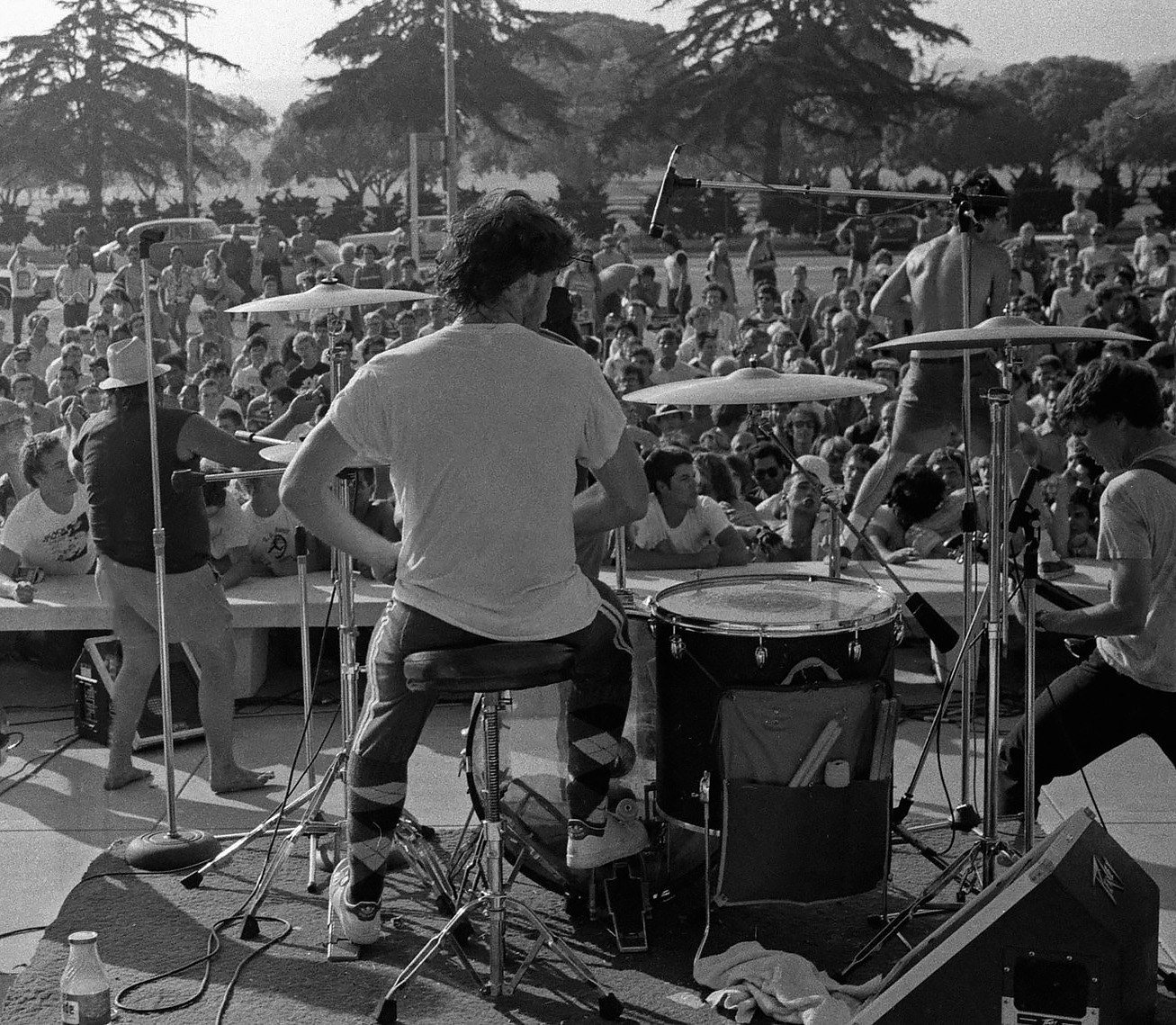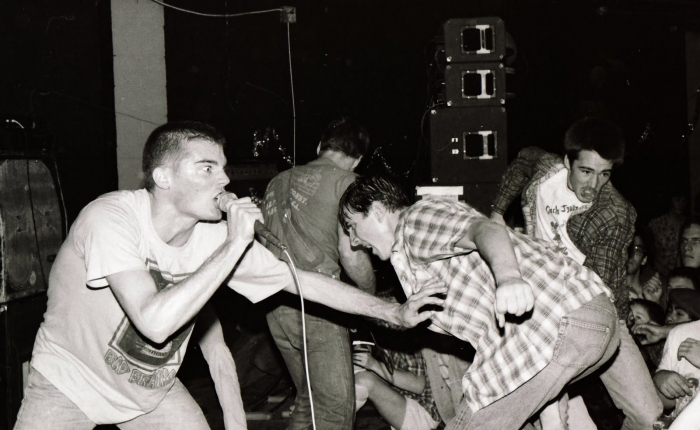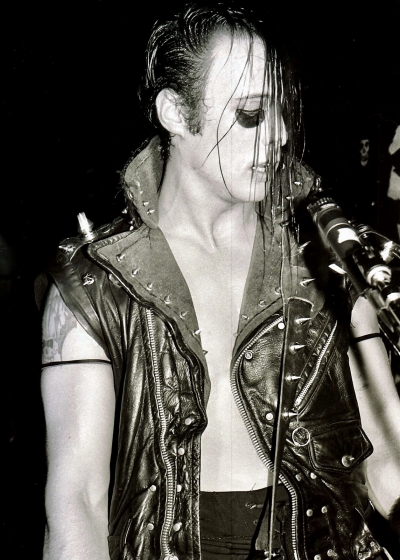Image credit: Kevin Salk Photography
I’ve been a big fan of Punk music for a long time. It’s had a big impact on my life, and I’ve written about it here, in case you’re interested. Anyway, one of the most striking things about Punk is the community. The never say die attitude. The never-ending push to will oneself toward not only success but more importantly- survival. One of my favorite eras of Punk is the 80s. That may seem all too obvious considering it’s kind of the era that started it all, but I like it just the same. Photographer Kevin Salk was there in person for this magical era in music known as Punk. Luckily, he had a camera in hand as well. Maybe it was a case of being in the right place, at the right time, or perhaps it was his artist’s intuition. Nevertheless, Kevin’s images of that early era in Punk Rock have become iconic and striking. He may not have known it at the time, but those photos now tell a story of a bygone and truly influential era in history; they are what I call “living history.” I for one am thankful that Kevin was there to see it happen and the document is all in the process.
Before COVID got in the way, on January 11, 2020, the place to be for lovers of all things music history and Punk was the Fathom Gallery in Brentwood for their exhibit/show, Punk Rock: Photos from a Fan’s Perspective, which formally showcased Kevin’s amazing work during that era. I hope that once COVID-19 gets the hell out of here, we can all go and see his work once again. More so, I pray he takes his gallery on the road to NYC, so I may check it out in person. In the meantime, head over to his site here to learn more and check it all out. I am honored to have had the chance to speak with Kevin and to learn more about his perspectives on life and music. Enjoy this one and all the photos that come with it, as they are the product of a true artist at work. Cheers.
Andrew:
Kevin, thank you for taking the time to speak with us here. How are you? What have you been doing to pass the time during the ever-raging dumpster fire also known as 2020?
Kevin:
I have been working on my book Punk: Photo’s From A Fan’s Perspective. I have never done this before so it has been fun, but a challenge. I have been going through all my photos and posting on my Instagram and Facebook page. It is super exciting to find ones I have never seen before. I have also been learning Photoshop. Now that is a tough program!
Aside from my book and photos, I have been riding my bicycle. I race and since that didn’t happen this year, I have been logging a lot of training miles. Cycling has been my serenity. Oh yes, I have also been working from home for my real job.
Andrew:
Tell us a bit about your backstory? How did you get into music and subsequently, photography? Or was it the other way around?
Kevin:
I grew up in Manhattan Beach, California. Music was always part of my family. My musical tastes started with Jimmy Hendrix to KISS to Aerosmith to Punk Rock. A couple of childhood friends started to get into the music and going to shows so I jumped in 100%. I was never really into photography until I decided to take pictures at shows for reasons that I have no idea why.
Andrew:
As an artist and photographer, who are some of your greatest influences? How did you go about developing your signature style?
Kevin:
I never considered myself a photographer or an artist. At the time I in was in the scene, Glen Friedman was the guy. I saw a lot of his photographs in fanzines and I always thought his work was amazing. I guess you could say he was my influence. I never really developed a style. I just took pictures for fun but I was serious about the process. I guess my “style” is I was a fan who was at the right place and time with a camera. It could be more of a story than a style.

Andrew:
The way I became familiar with your work was the incredible series of photos you did where the focus was Punk Rock musicians. In some, they were interacting with the crowd. In others, they’re performing. What was the inspiration to begin that series?
Kevin:
I had put some photos on a website called Photoshelter a few years ago and sold a handful of prints. In July of last year, EVERYTHING changed when I got a text from Frank Coiro from Fathom Gallery. He saw my work online and was interested in meeting with me. Four days after that call, I had two photographs in his show called: Punk: A Culture of Attitude. I couldn’t believe what was happening. After that, we started to work on a solo show at Fathom. My show was on January 11th at Fathom Gallery, in West LA. It was an amazing experience! So, in a long-winded answer that was the start of the series of photographs. I have to thank Frank Coiro and everyone at Fathom for changing my life.
Andrew:
One of the things I love about the series is they’re mostly in black and white. I personally love that aesthetic. Why did you choose black and white?
Kevin:
In high school, I took a photography class where I learned how to develop film in black and white. I built a darkroom in the bathroom at my dad’s house so I could develop them myself. Like you, I love black and white photography. There is a clarity and texture that you don’t get with color. I did take some really cool color pictures at a couple of gigs. A few actually look better in black and white.
Andrew:
You must be a huge fan of Punk. What drew you into the genre? What does Punk mean to you? How does the ethos of Punk inform your work as an artist, if at all?
Kevin:
When I was 9, my parents divorced, which at the time was not a common occurrence. Combine that with being one of the few Jewish families in Manhattan Beach, and you had the perfect ingredients for a kid to become angry and feel alienated. As I grew into my early teenage years, that feeling increased, but so did the need to rebel against society and my parents. That feeling of being part of a group that shared the same music and feelings was the icing on the cake.
Today, Punk, for me, fills that void of not fitting into the “box.” This is especially true in Manhattan Beach where I live. It has become a town of Range Rovers and McMansions. I tried to fit into that box in the past, but it blew up in a big way. As I got more involved with my photography and listened again to the music, my feelings of Punk and rebelliousness resurfaced. I realized I don’t like to fit into the norm, even at my age. When I really think about it, that feeling is as important now as it was back then.
Andrew:
As a photographer, who were some of the earliest bands you shot? What do you remember about the early days? What do some of those shots mean to you?
Kevin:
I started taking pictures of Minor Threat at the Barn in 1982, as well as some other bands. Some actually came out pretty good. One of those is the cover of my book. When I got a real Minolta 35mm, I started to take more and more and I was developing them in my darkroom. I only took pictures of Black Flag, The Misfits, Minor Threat, The Descendents, The Circle Jerks, and a handful of other bands. The actual number of shows was rather small…maybe only 10ish. The shots now are a real sense of pride and excitement. I never expected this to happen. It has been a very special gift.
Andrew:
As a photographer, you’re documenting living history. Your images are more or less how we will remember certain moments and even eras. What are your thoughts on that? How meaningful is it to have played an important role in physically documenting an important era and movement within music and history?
Kevin:
The fact that my photographs played an important role is overwhelming and evokes a lot of emotions. It is very humbling.
Andrew:
Aside from music and photography, what other passions do you have? How do those passions inform your art, if at all?
Kevin:
I am a passionate cyclist. I love riding my bike. It is my escape and I love to train and race. I am also passionate about college football. I went to Arizona State, my oldest daughter when to Auburn University, and my youngest went to Berkeley so I am a huge supporter of those teams. Cooking is another one. I am becoming very interested in art due to the love of my life, my girlfriend, Elizabeth. She is exposing me to all facets of art. She has a Ph.D. in art history, so she is a great teacher.

Andrew:
Are you into vinyl? Tapes? CDs? If so, how big is your collection? Where do you like to shop for music?
Kevin:
I am not really into vinyl or CDs. My collection has shrunk over time as I have sold some to certain collectors. I still have a number of 45’s, especially Black Flag. All my music is on my iPhone. It is a mix of Punk and Heavy Metal. I love Metal like I love Punk Rock…loud and fast. I am also a big fan of Jazz and Classical.
Andrew:
What are a few albums that mean the most to you, and why?
Kevin:
Nervous Breakdown by Black Flag- The words “I am about to have a nervous breakdown and my head really hurts,” have a lot of meaning to me.
The Black Album by Metallica- An epic album! I am a huge Metallica fan.
Back in Black by AC/DC- No need for an explanation on this one.
Damaged by Black Flag- The intensity. ‘Rise Above’ is one of my all-time Punk favorites.
Pennywise- All their albums. Homegrown boys still kicking ass.
Andrew:
What are some albums you don’t have, but hope to find one day? Are there any albums you’ve given up that you wish you hadn’t? Are you like some of us who purge records only to rebuy them again?
Kevin:
There are a number of albums that I wish I had even though I would most likely have sold them anyway. I did sell a number of Misfits albums on eBay a few years ago to some European buyers who paid crazy money for them. I think they would be worth more today. I am not sure if I will replenish any. My photographs have replaced my albums. I am also collecting Punk Rock books, especially Raymond Pettibon. I did however keep all my Black Flag albums.
Andrew:
You’ve maintained a strong DIY work ethic and ethos throughout your career, which I love. Why is that important for you? What advice would you have for anyone just starting out?
Kevin:
It has been really fun to learn things like Photoshop and using social media to build up “my brand.” I also have enjoyed working with Fathom on my book. I enjoy being part of the process. They have helped my DIY. Maybe it should be DIWF…DO IT WITH FATHOM. I think the most important thing is that I was able to be in the Punk Rock scene and was fortunate to be able to capture parts of it. My recommendation for anyone getting into photography is what I did, just go out and have fun. The excitement is what you capture on your camera.
Andrew:
Looking back, tell us about some of your favorite moments. Ones that are the most meaningful to you and why.
Kevin:
My all-time favorite moment by far was my solo photography show at Fathom. I am sure when my book is published will be up there, but the show is #1! Another one was when I was developing the negatives in my darkroom and saying, “Holy shit, that is an amazing picture!” That is the beauty of using film…you don’t know what you have until you develop it.
Andrew:
You’ve been in the trenches so to speak with some of Punk’s greats. There are a lot of artists out there who are fantastic but get stuck in the underground, while others go on to great success. What is it about our culture that causes this to happen? Do think the general public is truly listening?
Kevin:
I think there are many Punk greats who have had great success underground and others “above ground.” There are many who have both. It is great either way.
The easier access to music from the Internet is having a big impact. Back in the day, you had to go to record stores to buy 45s. The reemergence of vinyl is definitely having a big impact. That could be one of the reasons you are seeing old-school bands who were publicly dormant back into the scene.
Andrew:
Last question. In the world we live in today, we are more or less dominated by capitalism and the never-ending barrage of social media. How has this affected music as an art form? Is an artist’s ability to get their music out there hindered by all this, or helped? How do you feel what you do helps that cause?
Kevin:
I think it has been great for music. The Internet has allowed people from all over the world to hear all types of music…good and bad. Bands are able to leverage the Internet to build their following. My only concern is that music like Punk Rock has lost a bit of the mysticism from the old days. I think the stigma of old-school Punk Rock has changed. Gone are the fanzines, flyers, and the “slam pit.” Sorry, but mosh pits and the whole circle thing just don’t cut it.
I hope my photographs have helped people who were not born yet to be able to get a view of what it was like back from the perspective of a fan. I love seeing comments on the Instagram page like, “Thank you for bringing back memories of my youth,” or “I wish I was around then.” That makes it all worth it.

Dig this interview? Check out the full archives of Vinyl Writer Interviews, by Andrew Daly, here: www.vinylwritermusic.com/interviews
